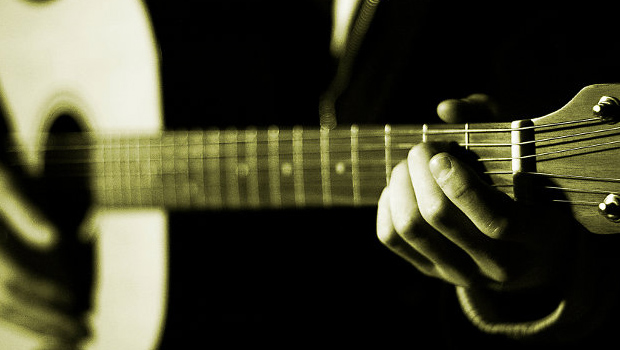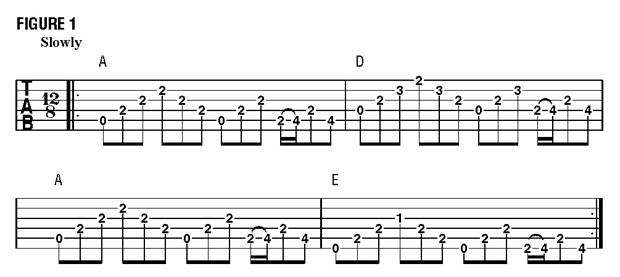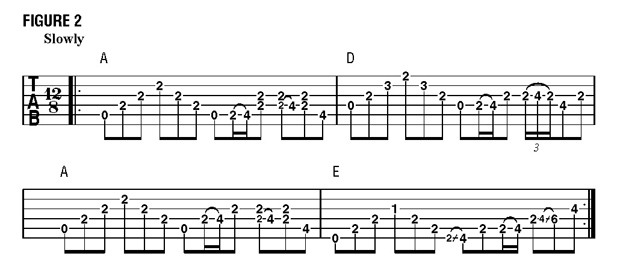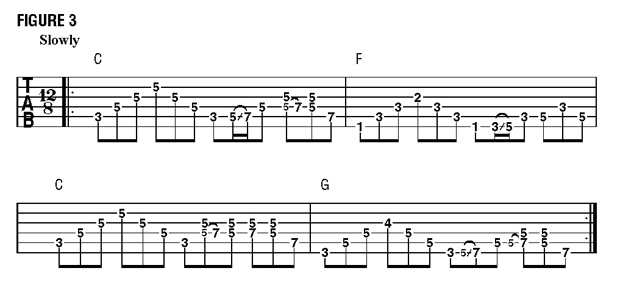Creating Guitar Melodies Between Vocal Lines

Fills, those brief instrumental runs that occupy the spaces between vocal lines, no doubt have their origin in the call-and-response vocal tradition associated with country blues, gospel, work songs and field hollers.
When B.B. King, for example, sings a line and answers himself with a lick on his guitar, he’s merely echoing what he heard in church as a child growing up in Mississippi.
On records, guitar fills can be overdubbed, but you can enhance both your rhythm playing and soloing by learning to alternate seamlessly between steady chord patterns and well-placed melodic phrases.
Rhythm-plus-fill parts were popular among 1960s soul and R&B guitarists like Steve Cropper (behind Otis Redding) and Curtis Mayfield (with the Impressions). Jimi Hendrix was also a master - his introduction to “Little Wing” is essentially a compendium of classic R&B guitar fills.
This rhythmic approach works as well on acoustic guitar as it does on electric, and solo performers find it to be an especially effective way of enhancing the interaction between their rhythm parts and vocals.
While a fill may potentially draw on all of the same technical and conceptual ingredients as a full-blown solo, we’ll concentrate on a single, versatile resource: the major pentatonic scale. Comprised of just five notes - those of the major triad (root, third and fifth) plus the second and sixth degrees of the major scale - the major pentatonic somehow seems just right for creating concise fills based on major chords, and it falls easily under the fingers, to boot.
Figure 1 shows a four-bar example of ballad-style rhythm. The basic feel is 12/8, or four eighth-note triplets per bar. Typically, the guitar pattern consists of broken chords and is played with consecutive downstrokes on the first three notes and upstrokes on the next three, all with a flatpick.
Get The Pick Newsletter
All the latest guitar news, interviews, lessons, reviews, deals and more, direct to your inbox!

On the fourth beat of each bar, the rhythm pattern is replaced by a fill built from the major pentatonic scale based on the root of the chord. In each case, fret the hammer-on between the first two notes of the fill with you first and third fingers. (Note that while each fill is based on a different root, the finger patterns are all identical.)
Figure 2 shows the same progression with fills extended to occupy the last two beats of each bar. These also include such embellishments as doublestops (bars 1 and 3), a rapid hammer-on/pull-off combination (bar 2) and a slide up to the next position (bar 4).

The same approach to blending rhythm and fills can be adapted to any key by using standard barre-chord shapes. Figure 3 shows a progression in the key of C. The fingers for the fills and the box pattern are the same as those in open position; the only thing you’ll find challenging is shifting your first finger from the root of the chord to the fill and back again in a smooth manner.

The F chord is typically the most difficult to fret cleanly, so one you’ve got that mastered, the rest should come fairly easily.
In practical terms, the placement, frequency, length and complexity of fills can be judged only in the context of a vocal. Flls are, after all, intended to answer to the main melody rather than stand on their own. But with a vocabulary of bite-sized phrases like these you can lengthen or shorten them as needed.
"Upgrading from your entry-level acoustic opens the door to an entirely new world of tonewoods, body shapes, and brands": 6 signs it's time to upgrade from your first acoustic guitar
"I'm past my prime": 5 common excuses for not learning the guitar – and 5 body and mind-boosting reasons you should









